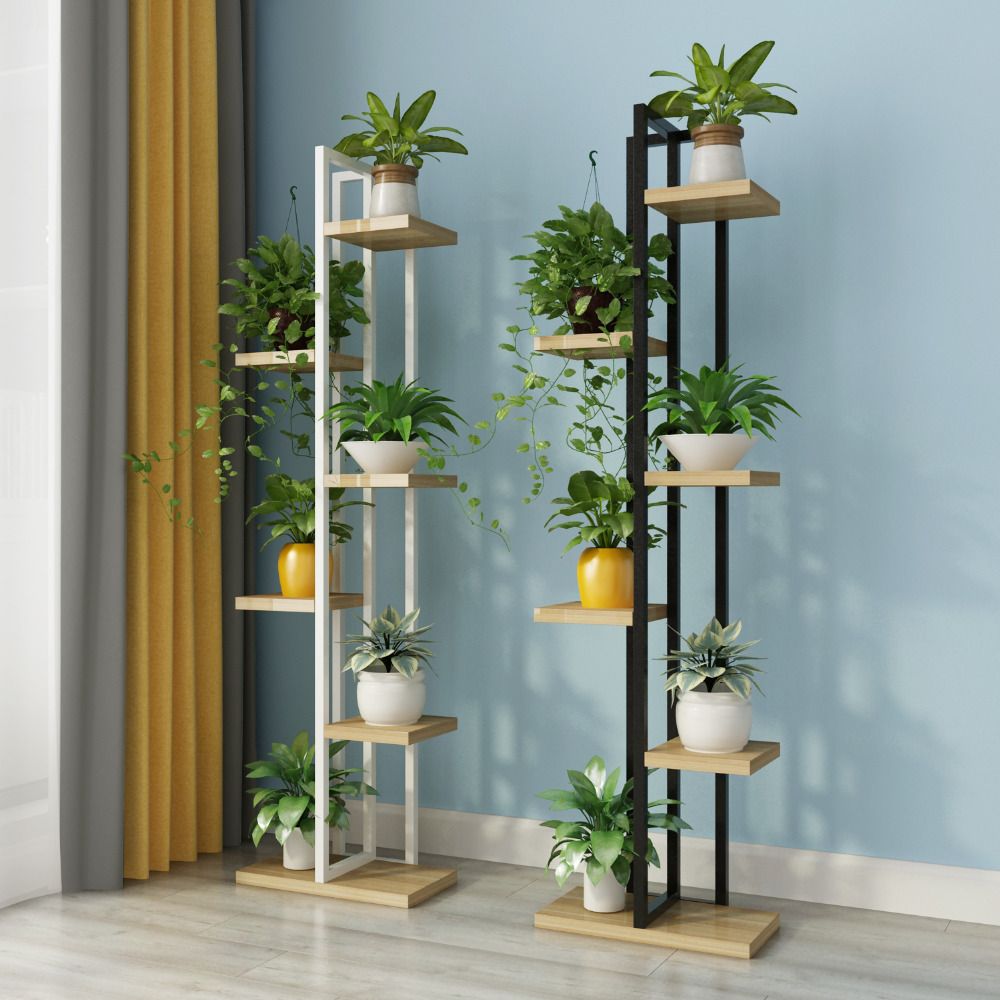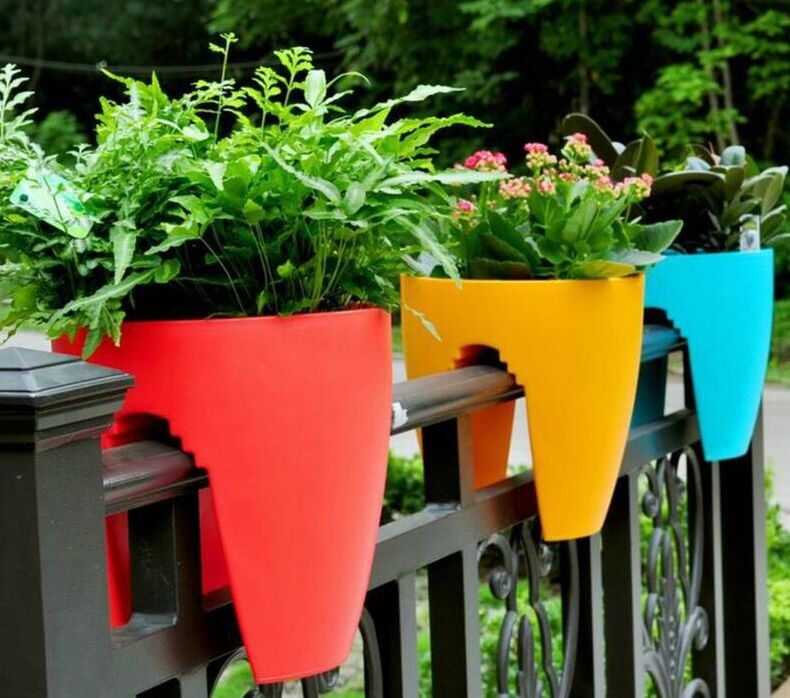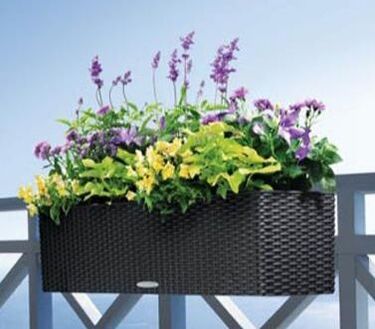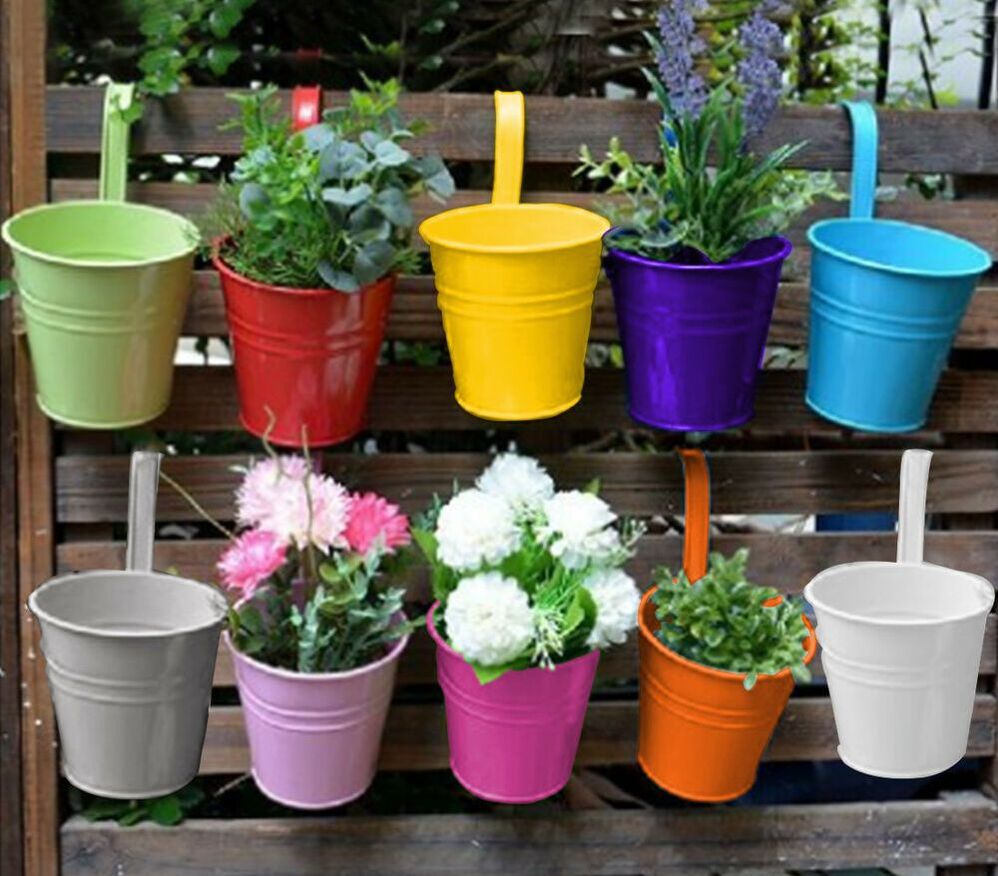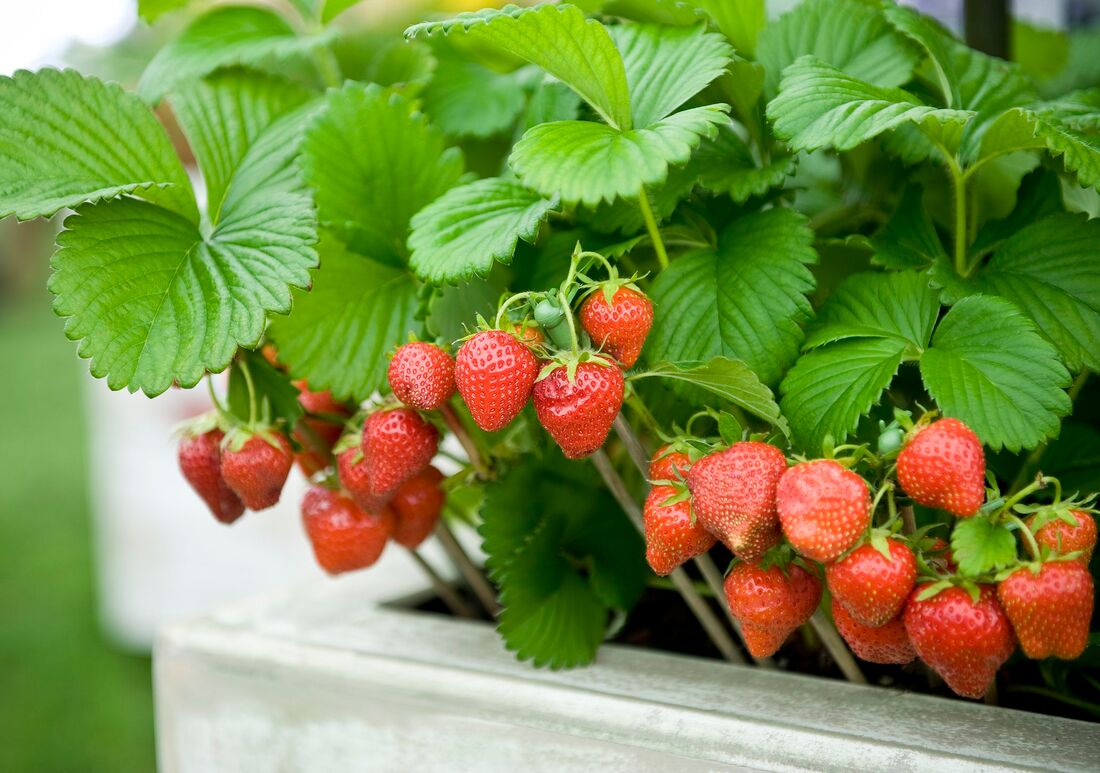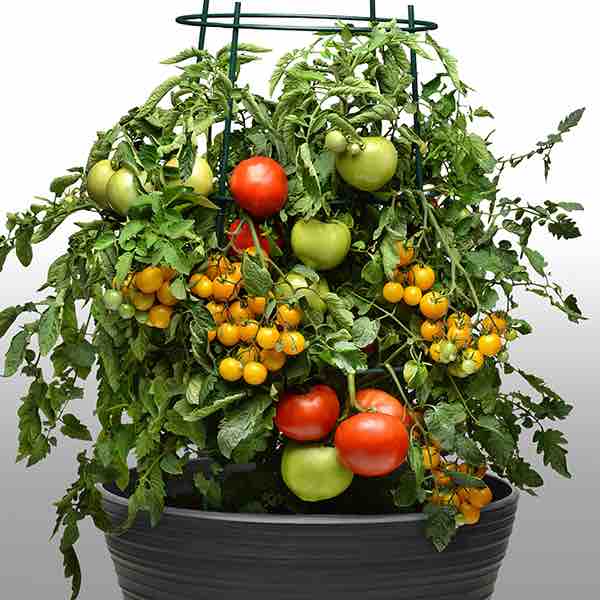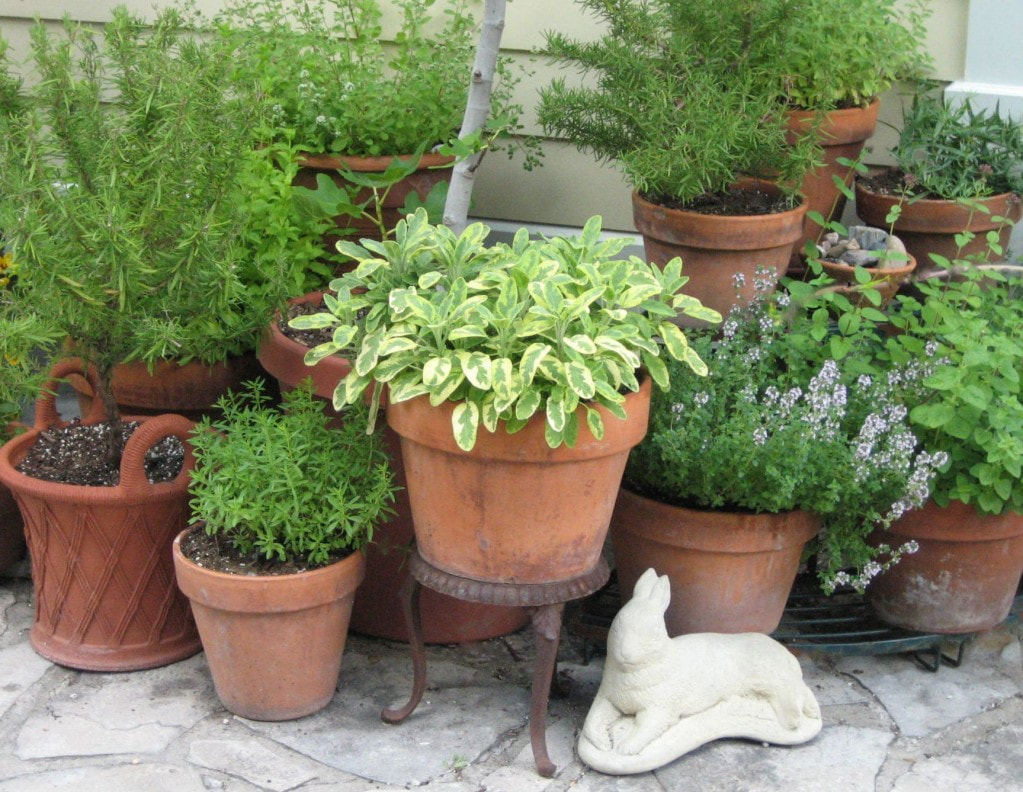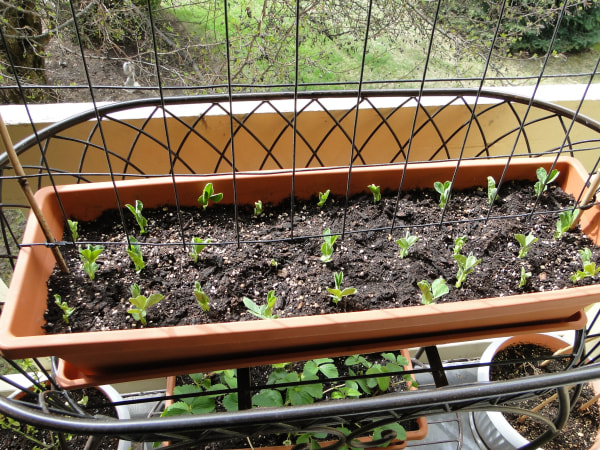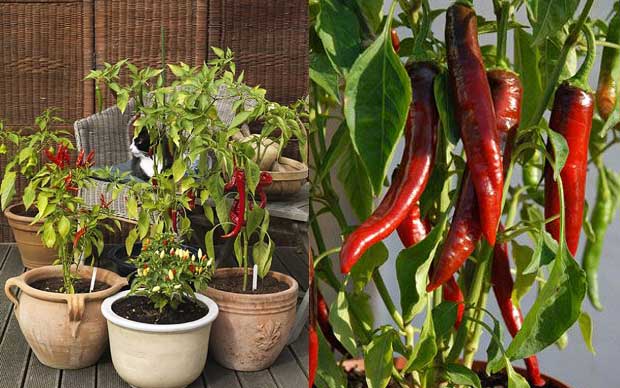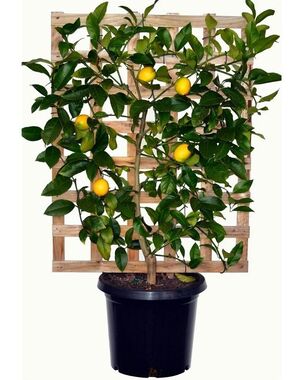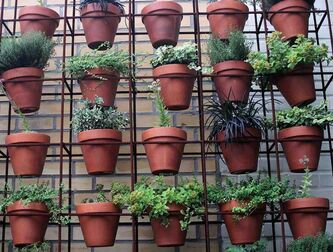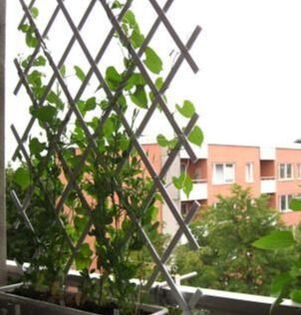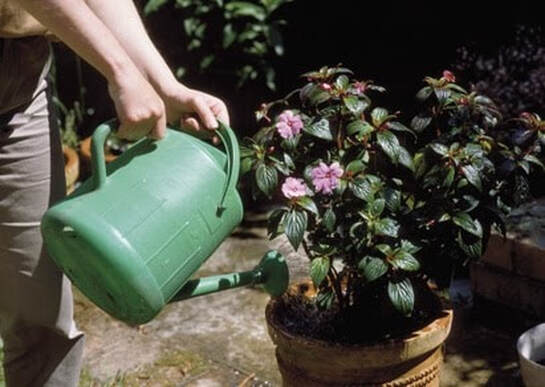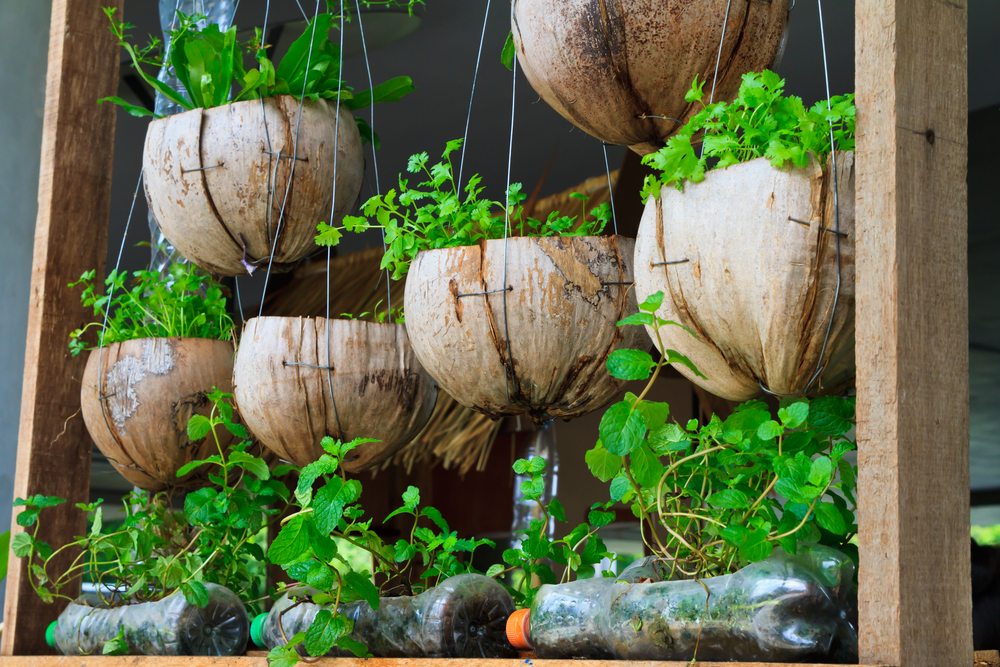You’ve successfully babied a houseplant or two, and now you’re ready
for the next step. But how do you garden without a yard?
Living in an apartment doesn’t mean you can’t grow things.
It just takes a little ingenuity and planning.
for the next step. But how do you garden without a yard?
Living in an apartment doesn’t mean you can’t grow things.
It just takes a little ingenuity and planning.
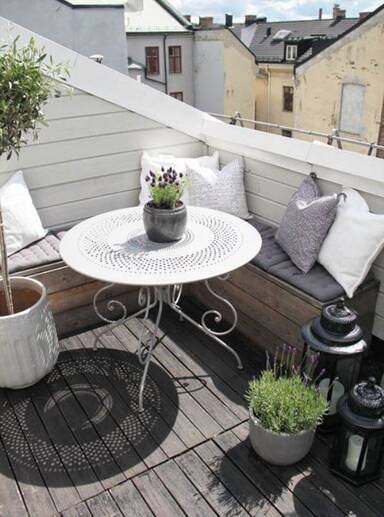
START SMALL
Try a few pots, window boxes or hanging baskets to get comfortable, and add more as you gain confidence. Before long, you’ll be expanding your greenery to cover your balcony, windowsills and stair railings.
Just wait until you see how easy apartment gardening can be, thanks to these simple tips.
Even if you live in a tiny apartment, you should be able to grow some plants. In addition to typical houseplants, certain herbs, fruits and vegetables can thrive in an apartment garden.
Factors, such as access to sunlight and the sheer weight of your containers, need to be taken into consideration. Here's how to start your apartment garden off right.
CHECK YOUR LIGHT LEVELS
The most important factor is making sure you have the right light for your plants. Indoors, south-facing windows in the Northern Hemisphere (or north-facing in the Southern Hemisphere) provide the most light, and you’ll be able to grow houseplants that need bright light (such as rubber trees and fiddle leaf figs) here.
Try a few pots, window boxes or hanging baskets to get comfortable, and add more as you gain confidence. Before long, you’ll be expanding your greenery to cover your balcony, windowsills and stair railings.
Just wait until you see how easy apartment gardening can be, thanks to these simple tips.
Even if you live in a tiny apartment, you should be able to grow some plants. In addition to typical houseplants, certain herbs, fruits and vegetables can thrive in an apartment garden.
Factors, such as access to sunlight and the sheer weight of your containers, need to be taken into consideration. Here's how to start your apartment garden off right.
CHECK YOUR LIGHT LEVELS
The most important factor is making sure you have the right light for your plants. Indoors, south-facing windows in the Northern Hemisphere (or north-facing in the Southern Hemisphere) provide the most light, and you’ll be able to grow houseplants that need bright light (such as rubber trees and fiddle leaf figs) here.

Herbs, such as thyme, parsley and rosemary, also do well in bright light or on a windowsill. Another solution? Invest in a stand-alone LED grow light, or one that comes with a shelving kit for a dark corner of your apartment.
Most fruiting and flowering plants need a full day of sunshine. This can be hard to come by in an apartment, especially in a city where tall buildings can block the sun for at least part of the day.
Balconies and rooftops offer the best chance of full sun. If you're gardening on a windowsill, you can either choose plants that require less sunlight, such as certain salad greens and herbs, or you can add a grow light to mimic the sun's rays.
Most fruiting and flowering plants need a full day of sunshine. This can be hard to come by in an apartment, especially in a city where tall buildings can block the sun for at least part of the day.
Balconies and rooftops offer the best chance of full sun. If you're gardening on a windowsill, you can either choose plants that require less sunlight, such as certain salad greens and herbs, or you can add a grow light to mimic the sun's rays.
|
SCOUT A SPOT OUTDOORS
If you have your heart set on edibles, you’re going to need to head outside. Unfortunately, most vegetables, especially heat lovers such as tomatoes and beans, don’t do well indoors. But they will thrive on a balcony, deck or windowsill in containers. Watch your outdoor space for a few days to determine how many hours of direct sunlight it gets. Plants that flower or fruit typically require 6 or more hours of sun, which is considered full sun. The rooftop is another option but ask your landlord if it’s OK to put containers there first. |
WORK WITH WHAT YOU HAVE
“Right plant, right place” is a saying you’ll hear frequently among gardeners. It means read the plant labels or descriptions before buying so you’ll know what conditions each plant prefers. For example, sun lovers will not flourish in shade, and shade lovers will sizzle in sun. Some things are simply non-negotiable with Mother Nature! Remember that full sun is 6+ hours, and part sun is about half that.
“Right plant, right place” is a saying you’ll hear frequently among gardeners. It means read the plant labels or descriptions before buying so you’ll know what conditions each plant prefers. For example, sun lovers will not flourish in shade, and shade lovers will sizzle in sun. Some things are simply non-negotiable with Mother Nature! Remember that full sun is 6+ hours, and part sun is about half that.
|
CONSIDER WEIGHT
Containers full of soil are heavy to begin with, and once they are saturated with water their weight can triple. Make sure your apartment garden spot can handle the weight. Window boxes will need to be secured to the windowsill. And if you're gardening on a balcony or rooftop, check with your landlord or building board about weight restrictions. STICK WITH EASY-TO-GROW PLANTS
If you’re a newbie, choose plants that don’t require a lot of coddling. For houseplants, English ivy, sanseveria and peace lily are plants that grow in most light conditions and are hard to kill. For flowers, sun lovers such as marigolds, sweet alyssum and calibrachoa are great choices. Shade lovers such as begonia, torenia and sweet potato vine are super easy to care for. While herbs and greens, such as lettuce and mesclun, are the least-fussy edibles to raise, more and more vegetables (think tomatoes and beans) are being bred to grow well in containers. Look for the words “patio” or “bush” or “container” on the label or tags. |
PICK THE RIGHT CONTAINER
Choose a container that has several drain holes (or drill them yourself); no plant likes soggy roots. Stick with ones that are at least 16 inches (41 cms) deep for most veggies, though window boxes are fine for plants that don’t have deep roots, such as lettuce, arugula or spinach. Fill with potting soil, not garden soil, which isn’t the same thing. And make sure you secure the window boxes so they won’t topple over.
SOIL
Plants depend on their soil for water, air, and nutrients. Because your apartment garden will likely involve containers, you can't use ordinary garden soil. It will compact in pots, limiting air and preventing water from flowing through. Thus, a well-draining potting mix is necessary. Potting mix is light and fluffy, efficiently circulating air and water to keep roots healthy. And it's somewhat sterile, so you won't have to worry about bringing diseases into your apartment.
Choose a container that has several drain holes (or drill them yourself); no plant likes soggy roots. Stick with ones that are at least 16 inches (41 cms) deep for most veggies, though window boxes are fine for plants that don’t have deep roots, such as lettuce, arugula or spinach. Fill with potting soil, not garden soil, which isn’t the same thing. And make sure you secure the window boxes so they won’t topple over.
SOIL
Plants depend on their soil for water, air, and nutrients. Because your apartment garden will likely involve containers, you can't use ordinary garden soil. It will compact in pots, limiting air and preventing water from flowing through. Thus, a well-draining potting mix is necessary. Potting mix is light and fluffy, efficiently circulating air and water to keep roots healthy. And it's somewhat sterile, so you won't have to worry about bringing diseases into your apartment.
|
BEST PLANT CHOICES FOR APARTMENTS
You can grow just about any plant in a container to a certain extent. For instance, a full-size apple tree might be out of the question, but there are skinny columnar varieties that can fit in a 1-square-foot corner of your balcony. Think about what you enjoy eating, and then choose a few types of plants to try out for your apartment garden. You can start with seeds, which offer more variety and are cheaper. But small nursery plants will get your garden established sooner. Herbs: Although many herbs grow well in containers, they won't get as large and bushy as they would outdoors in the ground. And you might have to replace your plants if you harvest frequently, but it is wonderful to have fresh herbs close by for cooking. Some top choices for apartment gardening include mint, chives, parsley, lavender, basil, and thyme. Salad greens: Salad favorites, such as lettuce, spinach, and arugula, are fast-growing, shallow-rooted plants. They're not overly fussy about their growing conditions, as long as they get plenty of water. Tomatoes: Tomato plants can get large and heavy, but they grow well in pots. They will do best in a container that is at least 30 inches in diameter, but you also can grow some of the patio varieties in a hanging basket. Chilli peppers: If you like heat, hot peppers grow very well in pots, and they can set fruit year-round. You also can try growing sweet peppers in containers, but they typically don't do as well as hot peppers. Meyer lemons: Some of the easiest fruits to grow in a container are dwarf citrus trees. Meyer lemons do well indoors if they get six to eight hours of sun each day, along with some humidity. Put something underneath the pot to protect your floors and furniture, as lemon trees give off a sticky sap. Strawberries: A window box of strawberries is as beautiful as it is delicious. Strawberry plants generally need at least six hours of sun per day and consistently moist (but not soggy) soil to produce their best fruit. |
|
GROW UP
One way to make the most of what you have is to go vertical. Flowering vines such as mandevilla, morning glory and sweetpea are absolutely stunning clambering up a trellis, though you could also go the veggie route, planting peas, cucumbers or pole beans. Secure the plants to the trellis with stretchy garden ties, which give as the plant grows. Hanging pots are another possibility, especially for strawberries and patio-type tomatoes. |
|
WIND
If your plants will be exposed to high winds, especially on a rooftop or from heavy traffic near a balcony, you might need some added protection. Wind can tear through leaves and overturn top-heavy pots. So provide a wind block, such as a screen or railing. Or make sure your containers are wide and heavy enough to anchor the plants. |
KEEP CONTAINERS WATERED
Pots tend to dry out faster than garden beds, even if they're exposed to rain, so check daily, especially during hot weather. Stick your finger in to your second knuckle; if it’s moist, it’s fine to wait. If dry, go ahead and give it a drink. Soil pulling away from the sides of the container is another sign it’s time to water. Also, pots that are dark-colored or made of more porous materials, such as clay or ceramic, generally need water more often than plastic or metal because moisture evaporates more quickly from them. Plants in containers need a lot of water, often multiple times a day. So choose a spot for your garden that has easy access to a water supply. Carrying watering cans can get tedious, especially if you have several plants. If it works for your setup, consider purchasing a hose that can be attached to a sink faucet. It’s handy when you need it, and it coils away when you don’t. If you are growing your plants on an indoor windowsill, you might need to provide some extra humidity, especially when the heat is on. Spritzing the plants with a fine mist can help, or you can place the plants near a tray of water. |
|
FEED YOUR PLANTS
The necessity of frequently watering containers causes soil nutrients to leach out more quickly, so you’ll need to feed them regularly so they will continue to bloom or produce. Add a liquid or water-soluble fertilizer to your watering can, according to package instructions. Also, note whether your potting mix has fertilizer already in it, as this typically will delay the need for you to feed your plants. Pests and diseases have a way of finding plants no matter where you grow them, and there are no natural predators for insects indoors. Inspect your plants for problems whenever you water them or harvest. If you spot signs of pests or diseases, such as discolouring or holes in the leaves, move that plant away from the other plants until the problem is remedied. |
Learn when your specific plants are at their peak for harvesting, and then don't delay picking the fruits of your labor. In some cases, harvesting actually promotes the plant to produce even more food for you to pick.
Apartments don’t always offer vast amounts of space to indulge in gardening. But there's bound to be a sunny corner where you can test your green thumb and enjoy the fruits of your labor.
Apartments don’t always offer vast amounts of space to indulge in gardening. But there's bound to be a sunny corner where you can test your green thumb and enjoy the fruits of your labor.

